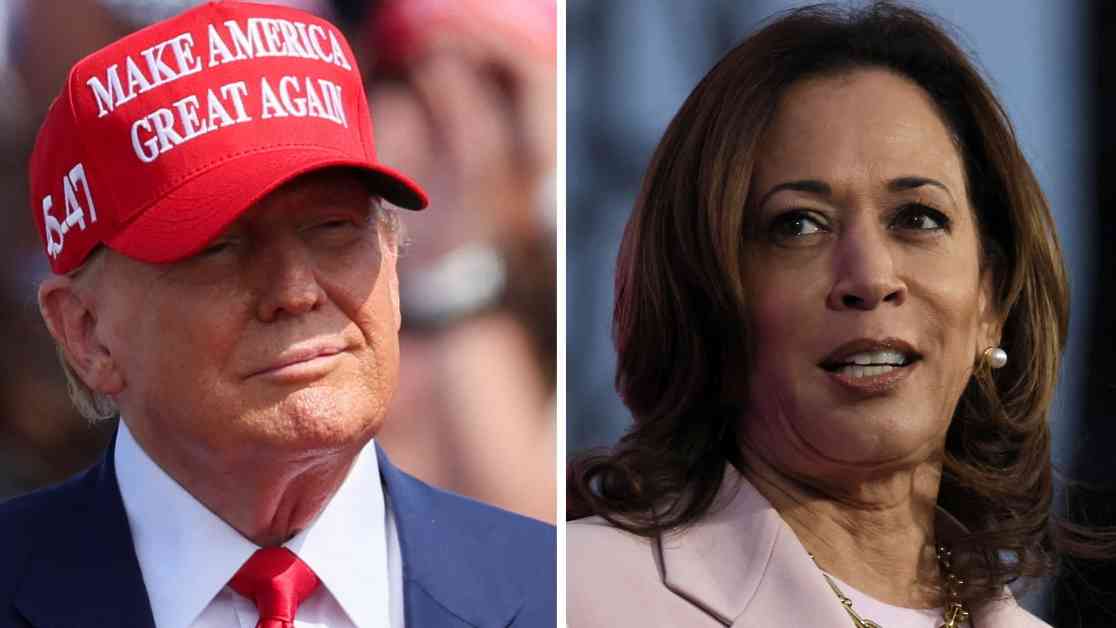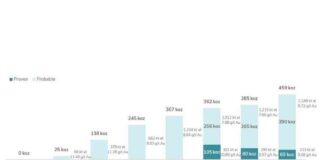Former President Donald Trump’s economic proposals have come under scrutiny in a new study from the nonpartisan Penn Wharton Budget Model, which shows that his plans would significantly increase federal deficits over the next decade. According to the study, Trump’s proposals would add a staggering $5.8 trillion to deficits, almost five times more than the $1.2 trillion that Vice President Kamala Harris’s proposals would add.
The Trump report highlights several key components of his economic plan that contribute to the massive deficit increase. One major aspect is his plan to permanently extend the 2017 tax cuts, which would add over $4 trillion to deficits over the next 10 years. Additionally, Trump’s proposal to eliminate taxes on Social Security benefits comes with a $1.2 trillion price tag, and his pledge to further reduce corporate taxes would add nearly $6 billion.
On the other hand, the Harris analysis shows that her economic proposals would raise deficits by $1.2 trillion over the next decade. Harris’s plan includes expanding the Child Tax Credit, the Earned Income Tax Credit, and other tax credits, which would contribute to the deficit increase. Additionally, her proposal to create a $25,000 subsidy for all qualifying first-time homebuyers would add $140 billion over a decade.
One of the key differences between the two economic plans is how they propose to offset the costs of their spending. The Harris report suggests that raising the corporate tax rate to 28% from its current level of 21% could partially offset the costs of her spending by $1.1 trillion. This move is seen as a way to generate additional revenue to help cover the expenses of her economic proposals.
In contrast, Trump has suggested paying for his agenda with tariffs on imports, including a 10% tariff on all imports and a 60% tariff on Chinese imports. These tariffs would not require congressional approval to be implemented, unlike Harris’s corporate tax rate increase. Trump argues that these trade policies would generate enough long-term domestic growth to outweigh the short-term costs of his economic platform.
However, economists have raised concerns about the potential impacts of Trump’s tariffs. Moody’s Chief Economist Mark Zandi estimated that Trump’s tariffs could generate $2.5 trillion in revenue but warned that such a hardline tariff policy could reignite inflation. The rate of consumer price increases has recently begun to cool, and economists worry that aggressive tariff policies could reverse this trend.
Both the Trump and Harris campaigns are working to paint the other side as an economic danger, with each side trying to appeal to voters who are concerned about the high cost of living. Harris campaign spokesperson James Singer criticized Trump’s economic agenda, calling it an “inflation and deficit bomb” that would disproportionately impact the middle class. In response, Trump campaign spokesperson Karoline Leavitt defended the former president, highlighting his business acumen and economic track record.
As the election season heats up, the economic proposals put forth by both candidates will be closely scrutinized by voters. The Harris campaign has been working quickly to roll out its economic agenda, aiming to address concerns about the economy, which has been a consistent vulnerability for the Democratic campaign. Voters have fond memories of the pre-pandemic economy under the Trump administration, and both campaigns are working hard to win over voters on economic issues.
In conclusion, the Penn Wharton Budget Model study sheds light on the significant differences between the economic proposals of Donald Trump and Kamala Harris. While Trump’s plans would lead to a substantial increase in federal deficits, Harris’s proposals also come with their own set of challenges. As the election approaches, voters will have to carefully consider the economic platforms of each candidate and how they will impact the country’s financial future.






















